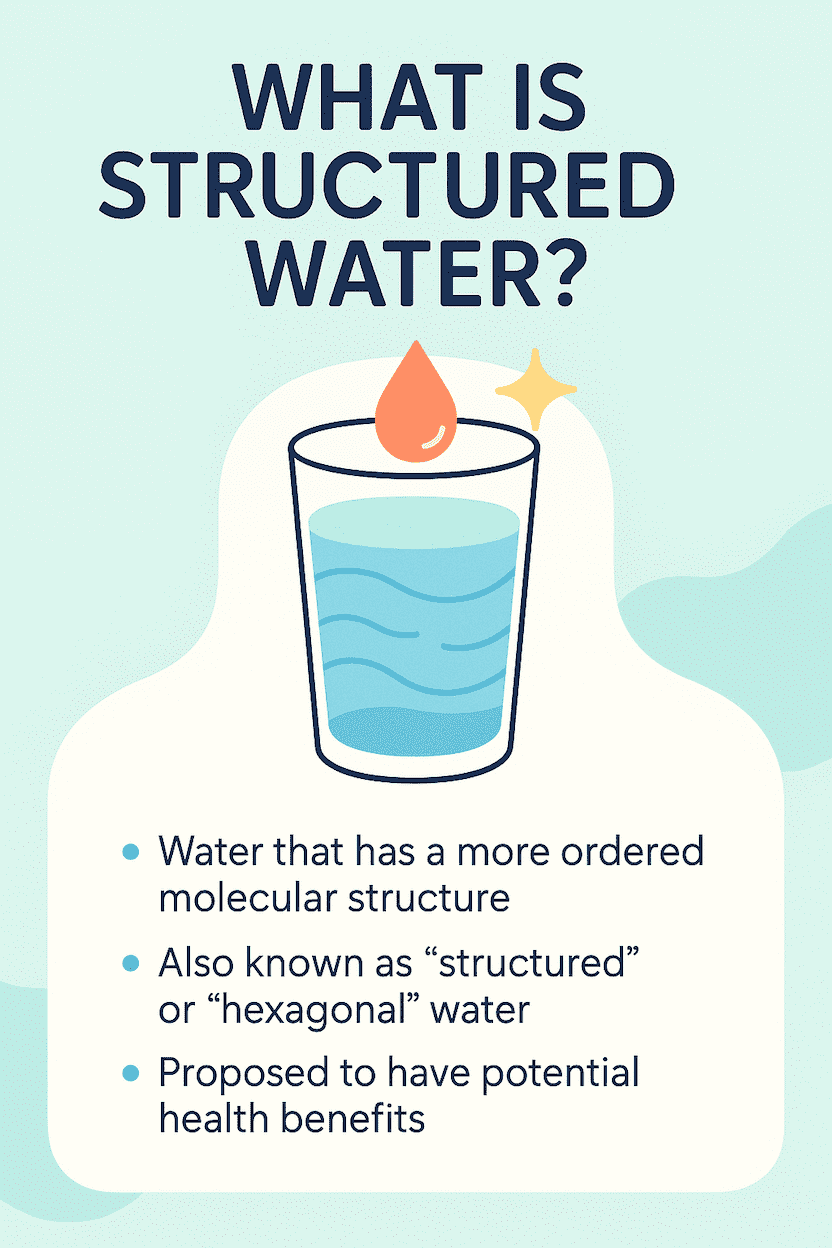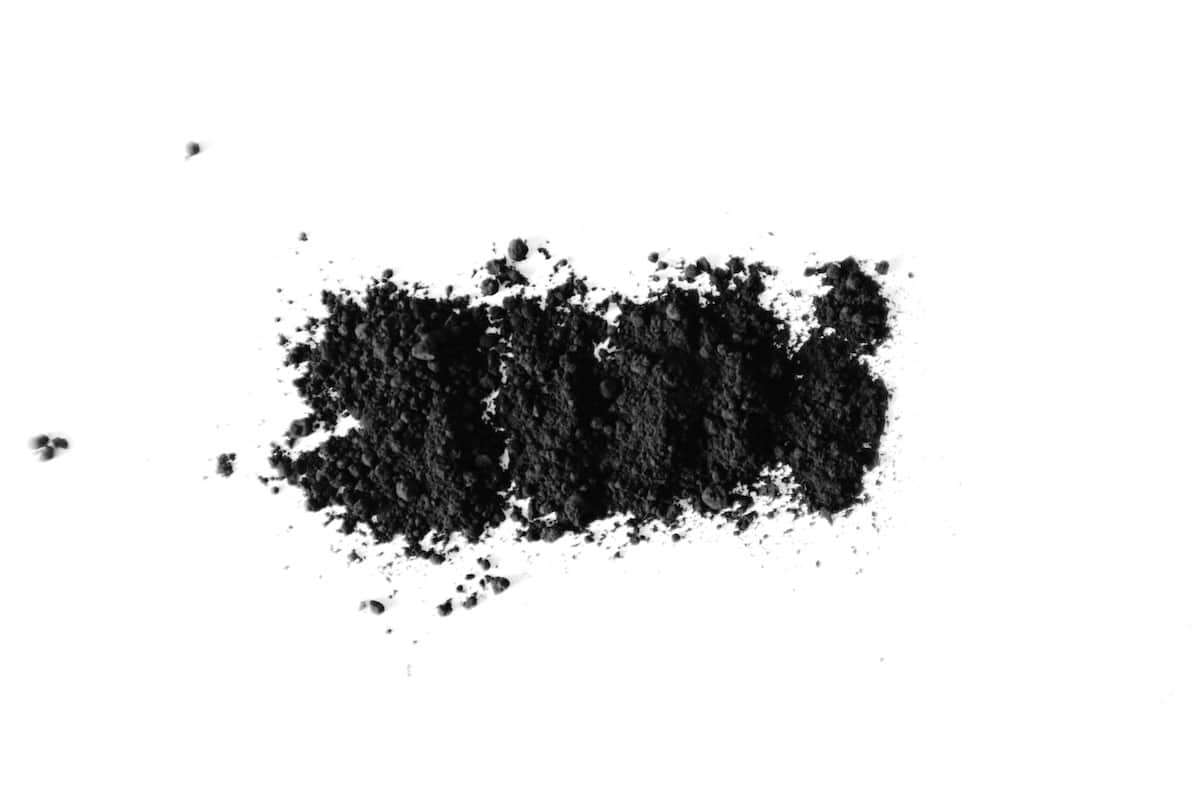Last update: November 6, 2025
4 minute read
What Is Structured Water? A Critical Look at the Claims Behind “H3O2”
Structured water, or H3O2, is marketed as superior hydration, but science says it’s a myth. Learn the facts, risks, and what really keeps you hydrated.

By Derick Rodriguez, Associate Editor
Edited by Dr. Dimitar Marinov, MD, RDN, PhD

Have you ever paused mid-sip and wondered whether the water you drink might hold hidden secrets beyond mere H₂O? You're not alone.
The concept of structured water, also known as H₃O₂ or hexagonal water, has captured imaginations, promising deeper hydration, boosted energy, and even detox benefits. But when science cuffs suspicion to marketing, what's real, and what’s just spin?
In this post, we’ll gently separate fact from fiction, review the science (and the lack thereof), and empower you with smart, actionable hydration choices.
Key takeaways
- H₃O₂ (structured or “hexagonal”) water is not scientifically recognized as a distinct, stable form of water
- Major fact-checking authorities and chemists call structured water a marketing-driven myth
- For real hydration benefits, focus on clean water intake and basic healthy habits; no special structure needed
What is structured water?
Structured water is often described as water organized in hexagonal clusters, sometimes labeled H₃O₂, suggesting an extra hydrogen and oxygen beyond H₂O.
Proponents say it occurs naturally, in mountain springs, glaciers, or living cells, and can be replicated through vortexing, UV/infrared exposure, or gemstone-infused bottles.

Historical or traditional use
While some traditional narratives romanticize glacier melt or untouched springs as sources of “high-vibration” water, there’s scant evidence of historical medicinal use of structured water.
The scientific story largely begins with Gerald Pollack’s exclusion-zone (EZ) water, highlighting ordered water layers near hydrophilic surfaces, energized by infrared light.
Science-backed benefits or myths?
Speculations:
- Pollack's EZ water has suggested gel-like, negatively charged layers of water that may play roles in biology, but these observations are not health-tested hydration benefits.
- Animal studies hint at some positive effects: magnetized water might support growth, reduce oxidative stress, or improve metabolic markers, but these findings are not yet mirrored in humans, and mechanisms remain unclear.
Scientific criticism:
- Chemists warn: H₃O₂ cannot exist as a stable, drinkable water form. The formula doesn’t hold, and observed clusters are fleeting, lasting mere femtoseconds (1,2).
- Fact-checkers and experts deem structured water claims as pseudoscience or marketing gimmicks; “pure quackery” in some cases.
- Material doesn’t hold structure outside controlled lab environments; realistically, bulk water is dynamic, not a stable hexagon you can buy.
— Dr. Dimitar Marinov, MD, RDN, PhDStructured water or “H₃O₂” is not a real, stable form of water—this concept is a marketing myth, not science. While some lab studies explore how water behaves at cell surfaces, these effects do not apply to bottled “structured water.” For hydration and health, plain clean water is all you need.
How it’s supposed to work
The marketing purports: structured water is more viscous, holds energy, and passes nutrients more easily to cells. Methods to create it include vortexing, light exposure, magnets, or special bottles.
Yet, none of these processes are linked to proven health outcomes.
Comparison with other hydration options
Type of Water | Claimed Benefits | Scientific Standing |
|---|---|---|
Structured / H₃O₂ Water | Energy, detox, superior absorption | Not supported; largely pseudoscience |
Tap or Filtered Water | Safe, affordable, evidence-based hydration | Strongly supported |
Alkaline Water | Better pH, hydration | Not supported; largely pseudoscience |
Hydrogen Water | Antioxidant benefits | Not supported; largely pseudoscience |
Best practices for hydration
- Focus on clean, easy-to-access water; filtered tap water works.
- Listen to your body’s thirst cues, especially in hot weather or during activity.
- Support hydration with nutrient-rich foods like fruits and vegetables.
- Replenish fluids during exercise or heat exposure.
- Be skeptical of flashy devices or miracle claims; hydration doesn’t need hype.
Safety & side effects
No direct harm from drinking water labeled “structured,” but beware of the indirect cost: purchasing fancy gadgets instead of investing in proven wellness habits.
Frequently asked questions (FAQ)
Here are some of the most frequently asked questions about structured water.
Final thoughts
Structured water, or H₃O₂, is a compelling story dressed in scientific-sounding language. Yet, under scrutiny, it unravels into a collection of hypotheses, lab curiosities, and marketing fluff.
Real hydration doesn’t require hexagons or gadgets; just consistency, clarity, and clean water.
Sources and references
Editor

Derick Rodriguez
Derick Rodriguez focuses on editing health and wellness-related content. With over half a decade of experience in the digital realm, Derick has developed a unique skill set that bridges the gap between complex health concepts and accessible, user-friendly communication. His approach is deeply rooted in leveraging personal experiences and insights to illuminate the nuances of health and wellness topics, making them more approachable and empowering readers with knowledge and confidence.
Fact checker

Dr. Dimitar Marinov
Dr. Marinov has years of experience in scientific research and preventive and clinical medicine. His publications in peer-reviewed journals are on nutritional status, physical activity, and musculoskeletal disorders among adolescents.
At VitaRx, we're not just passionate about our work — we take immense pride in it. Our dedicated team of writers diligently follows strict editorial standards, ensuring that every piece of content we publish is accurate, current, and highly valuable. We don't just strive for quality; we aim for excellence.
Related posts
While you're at it, here are some other relevant articles you might be interested in.

Get your personalized vitamin recommendations in less than
5 minutes.
Get your personalized vitamin recommendations in less than
5 minutes.






